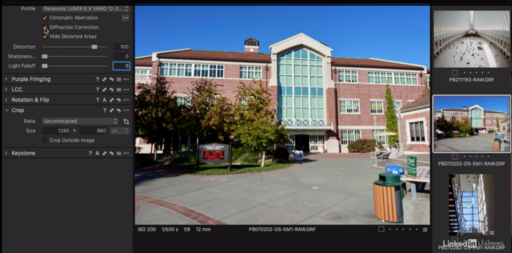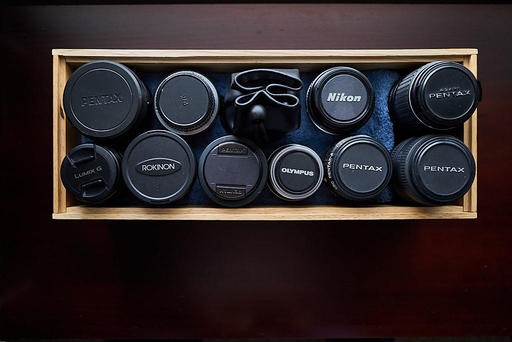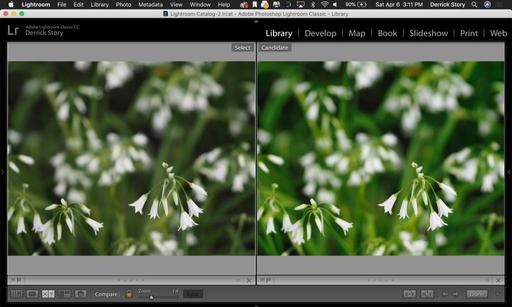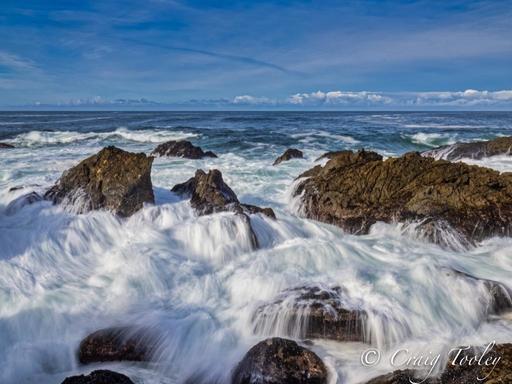This is The Digital Story Podcast #684, April 23, 2019. Today's theme is "How an Artist Evolves" I'm Derrick Story.
Opening Monologue
On one level, evolution seems inherent in the artistic process. Creativity is both exploration and problem solving. This is all fine in theory, but what about the practical reality of being an artist in today's economy? How does work? In today's podcast I share my findings based on conversations with two creatives tackling this very topic. I hope you enjoy the show.
How an Artist Evolves

I've been working on this project that I find fascinating, and I think you might find it interesting as well. I've started a new podcast called, The Nimble Photographer where I seek out artists who have redefined success and are willing to share their stories with me.
My first conversation was with photographer Trey Ratcliff where he talked about failures vs successes. Then, I sat down with writer Ben Long, who had to reinvent his career after the crash of 2008. I have upcoming interviews scheduled with musicians, painters, and more, all touching on the topics of evolution and reinvention.
First, I want to start with this thought by Trey, who addresses the notion of success vs. failure. I think he makes some good points here.
Now, I want to jump over to Ben, who touches on the idea of doing what we love for a living, and where did that idea come from in the first place.
If you're interested in learning insights from working artists who have managed to survive in this competitive environment, I would encourage you to subscribe to The Nimble Photographer Podcast. It's available on Apple Podcasts, Google Play Podcasts, Stitcher, and wherever you listen to your shows. My next interview should be live next week. In the meantime, you may want to check out to complete conversations with Trey and Ben. They're available right now.
New Online Trainings for Capture One Pro 12 and Luminar 3 with Libraries Now Available
Luminar 3 with Libraries Essential Training
Check out my new training, Luminar: Digital Asset Management that is available on LinkedIn Learning and on lynda.com.
Not only do I cover the library features, I provide a Quick Start chapter to get you up to speed in minutes, I show you the Magic Editing Filters in Luminar, and I explain how to use Luminar with other applications.
Once you apply these tools to your images, you'll discover that you can enhance them in ways never before possible, especially so easily. I hope you have a chance to explore both my training and the Luminar application itself. It may change your photography.
You can download a 30-day Luminar trial here.
Capture One Pro 12 Essential Training
Topics in this course include (peppered with inside tips):
- Tapping all the new features in Capture One Pro 12
- Auto adjustments and basic image editing
- Advanced editing techniques (and goodbye to Photoshop)
- Organizing your catalog
- Using star ratings and color labels to cull images
- Building an electronic contact sheet
- Creating a slideshow to review and present images
- Strategies for protecting master images
For those of you new to this application, I have a Quick Start chapter that gets you up and running in less than 20 minutes. Yes, that's the entire workflow, start to finish, in less than half an hour.
You can learn all the ins and outs of this amazing software in the comfort of your home, or even on your smartphone by watching this fast-paced training: Capture One Pro 12 Essential Training on LinkedIn Learning. If you're a lynda.com fan, it's available there as well. You will learn everything from image organization, to expert editing, to output and more. It will feel good to finally take control of your photo library with Capture One Pro 12.
TDS Workshops Update
Humboldt Redwoods Workshop Update
Our grand finale of the season will be on Sept. 18-20 in one of the most beautiful areas on the planet. Our headquarters will be in Fortuna, CA - an easy drive from the Eureka Airport only 25 minutes away.
We're located on the Eel River, and situated perfectly to explore the Redwoods just south of us. This will be an excellent event to cool off, slow down, and get some great images. Plus, you'll be able to spend some quality time with your fellow virtual camera club members.
We still have a couple openings on the reserve list. You can secure your seat by visiting www.thenimblephotographer.com, and place a fully refundable deposit for the event.
Updates and Such
Inner Circle Members: A big thanks to those who support our podcast and our efforts!
B&H and Amazon tiles on www.thedigitalstory. If you click on them first, you're helping to support this podcast. And speaking of supporting this show, and big thanks to our Patreon Inner Circle members:
And finally, be sure to visit our friends at Red River Paper for all of your inkjet supply needs.
See you next week!
More Ways to Participate
Want to share photos and talk with other members in our virtual camera club? Check out our Flickr Public Group. And from those images, I choose the TDS Member Photo of the Day.
Podcast Sponsors
Red River Paper - Keep up with the world of inkjet printing, and win free paper, by liking Red River Paper on Facebook.
Portfoliobox - Your PortfolioBox site is the best way to show off your best images.
The Nimbleosity Report
Do you want to keep up with the best content from The Digital Story and The Nimble Photographer? Sign up for The Nimbleosity Report, and receive highlights twice-a-month in a single page newsletter. Be a part of our community!
Want to Comment on this Post?
You can share your thoughts at the TDS Facebook page, where I'll post this story for discussion.






























